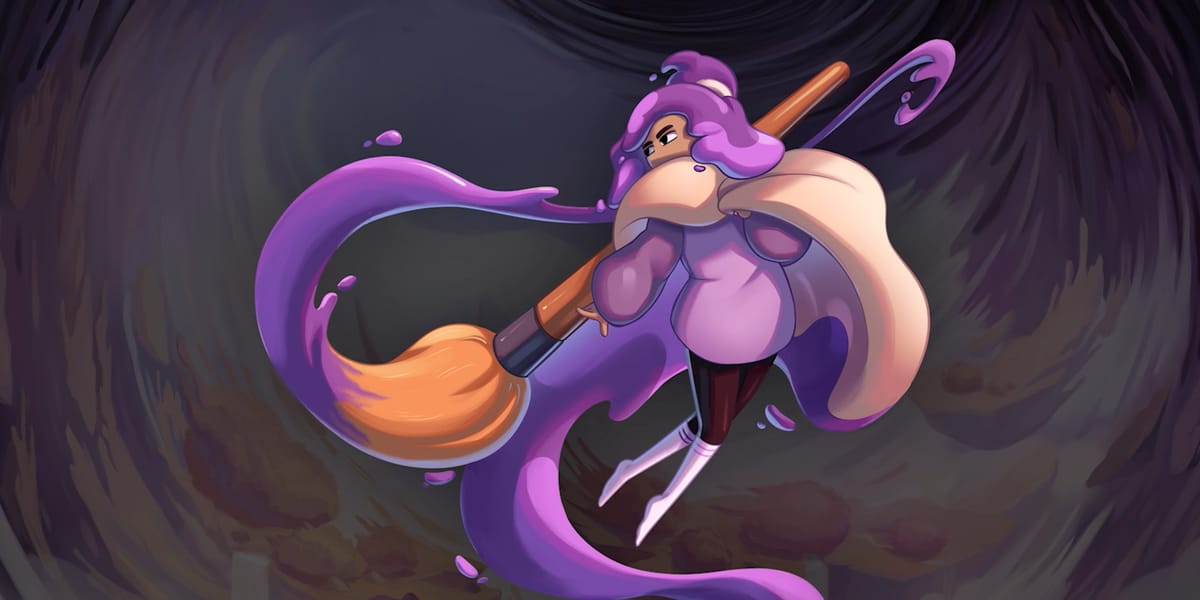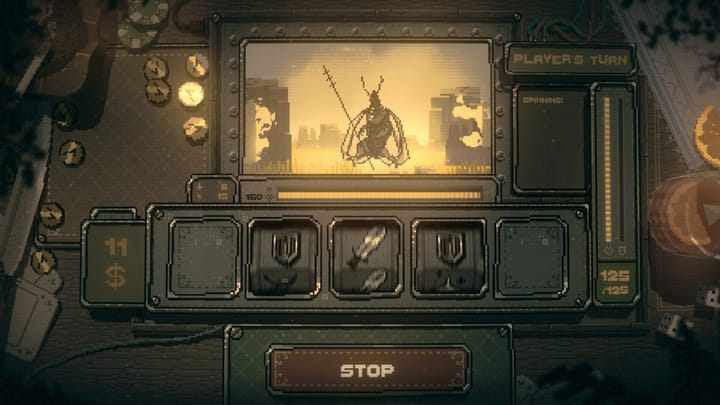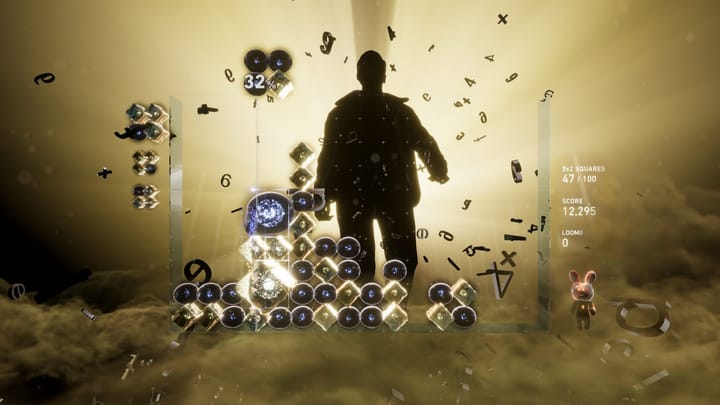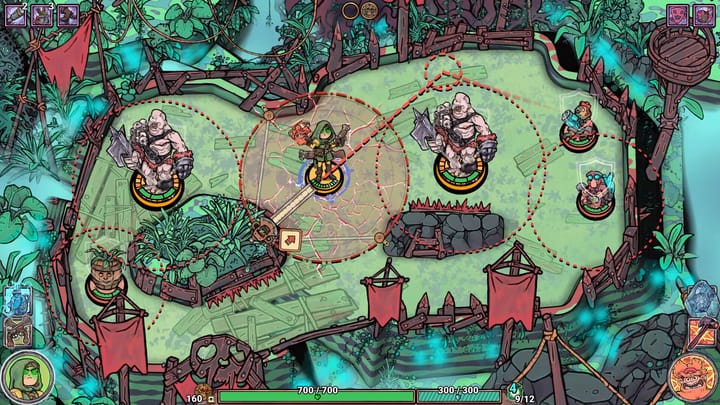No matter the genre, no matter the size and stature of that which is revered so, whenever a game releases that attracts so much of both a critical and cultural zeitgeist, sooner or later there are bound to be ample imitators whose clear (some might say, blatant) love and admiration for such a release, is evident. Whether this appears as a salvo, a wave, a gradual cascade or simply put, a mixed bag of titles that vary in quality. Some might say it risks undermining or otherwise dismissing games in otherwise broad strokes that put focus on the most evident and upfront of details.
But when a game's tone, gameplay loop, its user interface – the very size of one's health bar and accompanying magic/stamina/skill meter – and even just the overall framing of characters when set against an environmental backdrop, invokes such a clear comparison to one particular game. It's hard not to find one's comments (intentionally or not) pivot more into dismissive criticism, rather than observable analysis. So then, the question is raised: why is it that 2017's Hollow Knight, has resonated as vividly and as evocatively?

Herein, very much alike the ample Soulslikes that have dominated the Action RPG sub-genre the last decade, lies the coveted check-list to scratch off. Combat requiring a deft use of timing and dodging, check. A world that while not apocalyptic, musters a somewhat melancholic and off-kilter vibe, check. Clear nods to the Metroidvania genre, while at the same time positioning itself enough steps away to not feel restrained or hunkered down by those singular expectations, check. Optional routes that focus moreso on tightly-timed, precision-platforming wherein one wrong move spells disaster, check.
I'm sure – or at least I hope – developer BTF [stylized btf] will not mind the remarking on Constance as arguably one of the most blatant cases of a studio inspired by one singular title. "We can do that," the initial response may have been. "...we love this so much; we understand how to make something similar". At the risk of, again, introducing this title with a somewhat more cynical approach, allow yourself the briefest respite to recall how many games have come [and just as swiftly, gone] riding the coattails of those few handful of "modern classics".
We're not even a decade into Hollow Knight's would-be legacy and already a template has emerged. The notion of "action-adventure that blends challenging combat, exploration, platforming and customizeable skill load-out's" precariously veering to the sort of game pitch, whose over-saturation and confiding in established design tropes, renders most responses tepid at best and overtly-dismissive at worst. And if that wasn't bad enough a presumption, one look at Constance's very description – "...2D hand-drawn...colorful but decaying inner-world...declining mental health..." – and things very quickly start resembling a bingo card of independant gaming's most eye-rolling cliche's masquerading as "unique selling points".
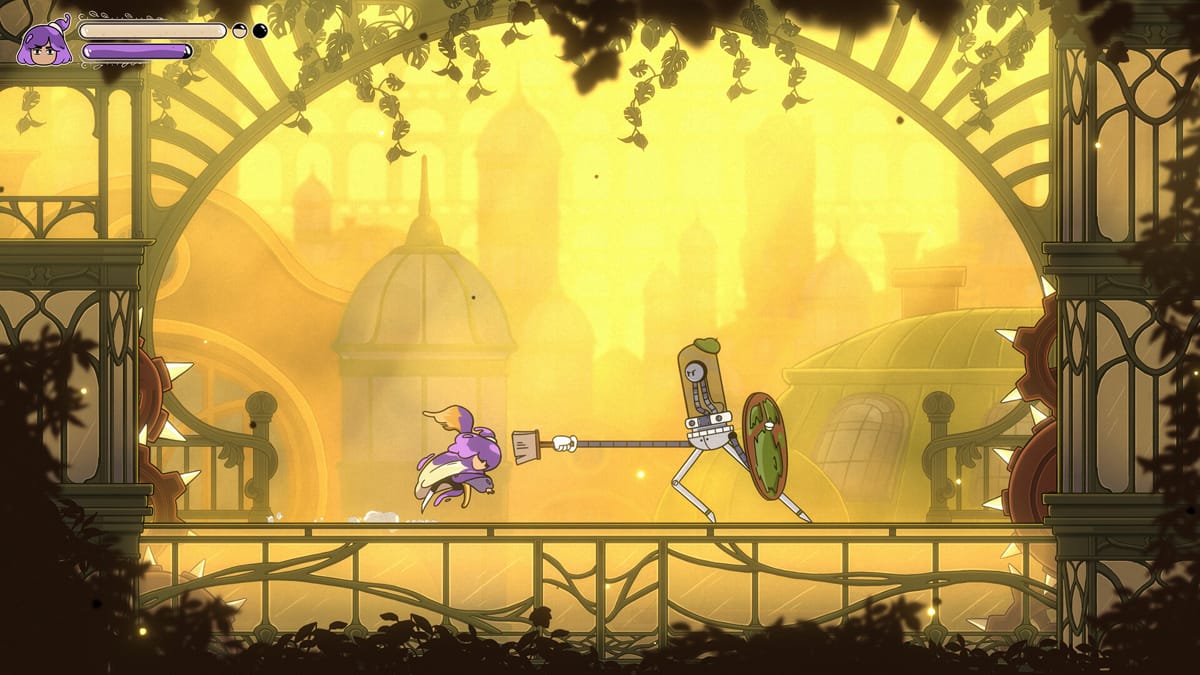
Again, this is not to knock or even muster undue slight at Constance specifically. But to remind ourselves (hopefully, the wider industry on top, though I am just one individual here) that similarities are easy to spot in the consumer space. Settle for little more than imitation (admirable and respectful of the original source it might be) and the response will be, in a manner of speaking, relatively limited.
So it's with commendation (and maybe a smidgen of personal relief) that after trying out both demo builds, BTF's Constance is the most promising iteration on this template of game. Of the ample examples confiding in this particular brand of "challenging" Metroidvania-inspired action-adventure, Constance is the one that is demonstrating not just a finesse for allowing nuanced qualities to shine, but most importantly, offering some new takes on gameplay mechanics that allow the game to shine all on its own. There's been tension, there's been frustration. There might've also been a few swear words mustered at the sight of one missing a crucial platform. Admitedly: platforms.
Yet as brief as these snippets have been, Constance finally feels like the game that has taken to Team Cherry's design as more a springboard, rather than a blueprint to merely trace over. And in the perpetual, internet meme-immortalizing wake of Silksong – Hollow Knight's eagerly-anticipated follow-up – continuing to be a no-show year after year, in another light, perhaps the stars look to have aligned fittingly well for Constance to instead brighten up the vacuum left by such a high-profile absentee.
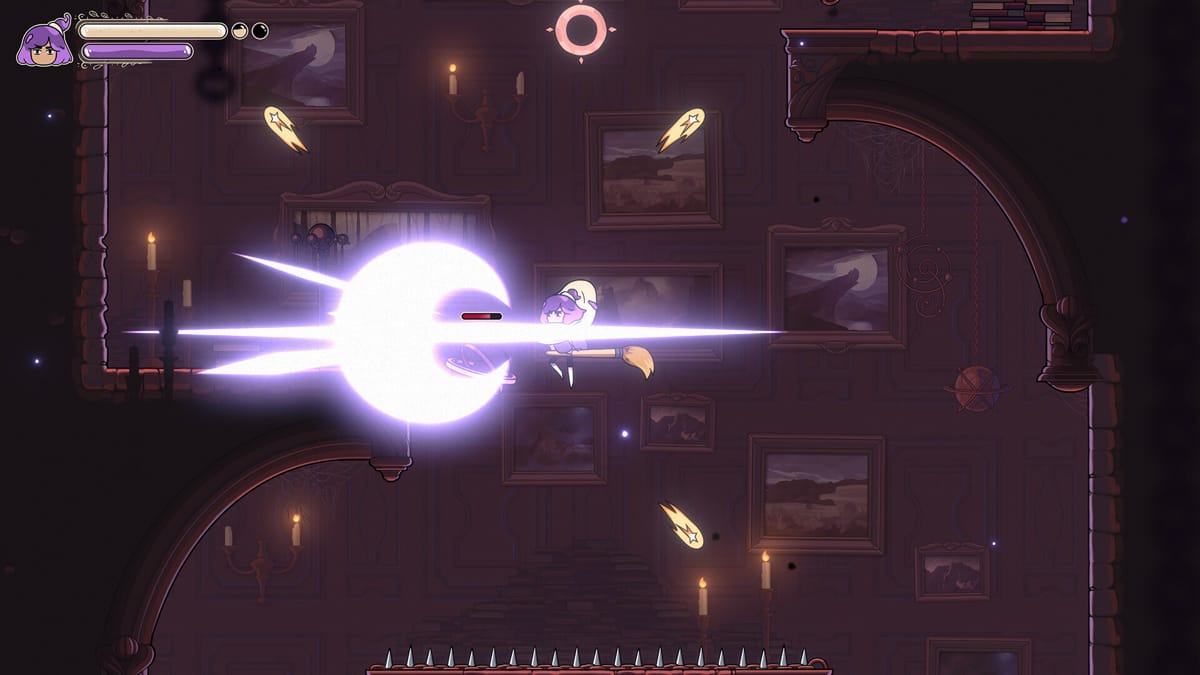
A prospect that is further fueled by some interesting deviations in gameplay and player ability most of all. Wielding a giant paintbrush as this game's go-to tool of infliction, Constance's painterly aesthetic also applies to its mechanics, whereby players fire paint to dispel not only enemy shields, but also make certain platforms accessible for a brief time. The interesting catch here, is while paint may run on an accompanying meter that drains the more you use it – the game instead allows you to keep dispelling paint, but at the cost to one's health.
A temporal status, clearly illustrated by the shadowy veil of black surrounding the space, as much your player-character's hair changing colour. An interesting dilemma that furthers these types of games' philosophy on the notion of managing health. Where Hollow Knight encouraged players to maintain engagement in combat as a means to recover health, Constance takes this one step further in asking the player how far they're willing to push things to hold onto such a beneficial strength.
But it's not just in this aforementioned character trait, where this system inspires a deeper degree of challenge and careful managing of one's "glass cannon"-like stature. Those previously-mentioned barriers one needs to dispel with paint? Not only do they respawn in what feels like record time, but simply touching them incurs damage. And while this idea of "hit object, incur damage" sounds fairly elementary, when it comes to situations that have you rapidly and almost repetitively striking objects or incurring damage on, say, a boss fight, making sure to keep an eye out on what is and what isn't shielded, throws up an even more perilous situation to carefully read. Restraining one's self, becomes just as important as letting loose when the time is right.
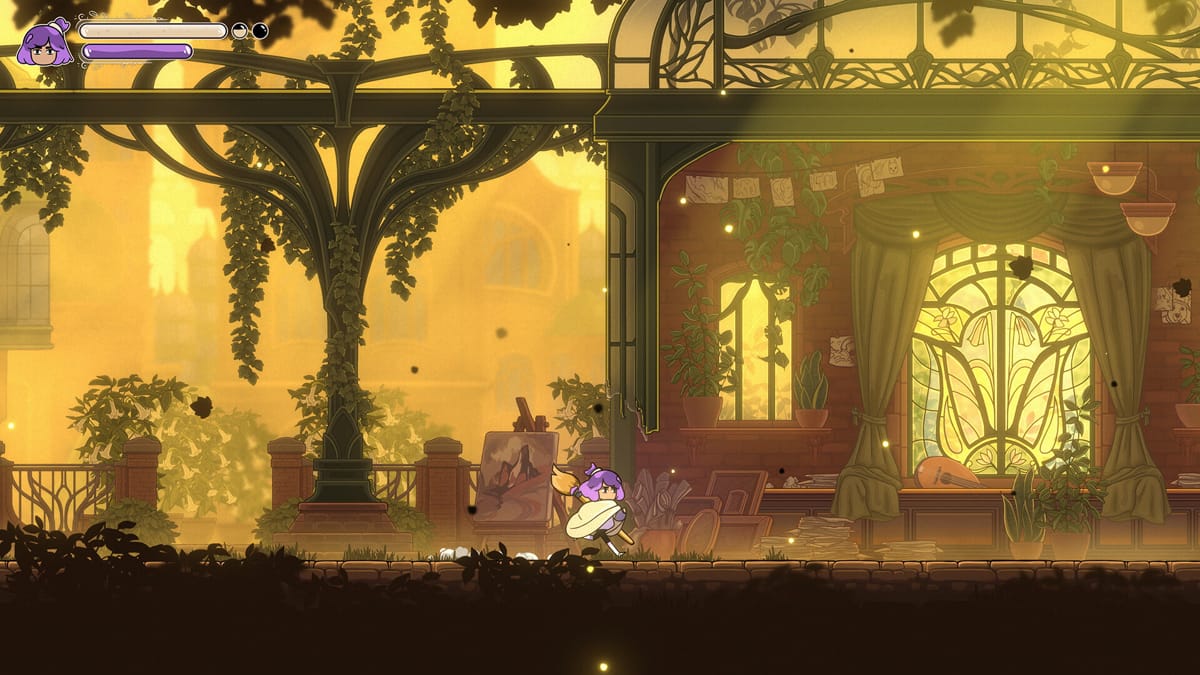
Even Constance's smaller details and choices in how the game feels to control, don't go unnoticed. The way your character can effortlessly attack mid-air – the subtle move forward when chaining together a string of strikes – is a small but satisfyingly-favoured decision. And for a game that is just as much about timing one's actions during a section of platforming, it's comforting to see Constance nails the fundamentals on fluid controls as well as it does. A certain stressful path, in the persuit of an optional collectible, becoming a steely, wide-eyed analysis on the certain positions of platforms and changing states.
When a game can so brilliantly transform a simple-looking array of platforms, into this more methodical and calculative set-piece, it's a hopeful sign that there still maybe exists one or two studios who recognize the thrill and euphoria that split-second platforming segments (a la Super Meat Boy and Celeste) bring. Releasing on November 24, Constance may well be leaving it late to stake a claim of relevance and reliability in 2025. But even from the couple snapshots offered, developer btf have, if nothing else, shown a deft touch for originality in spots. The vibes may still be somewhat melancholic, but the execution more importantly, seems promising.


